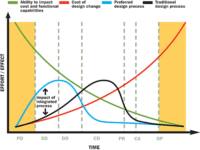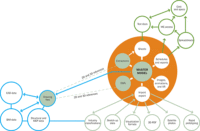A New Perspective
How can the profession play a bigger role on the stage of contemporary American life?
As Architectural Record’s new editor in chief, it is my pleasure to welcome you to the June issue. I couldn’t have timed a better entrance: The May issue was the biggest in three years, and the number of loyal readers make the magazine the leader in the field. I welcome the chance to take record forward as an independent journal, as it has been for most of its 120-year history; independence is essential to editorial integrity.

I come from the world of mainstream journalism, with 30 years’ experience as a cultural reporter, editor, and architecture critic, primarily at Newsweek magazine. That background has helped set my agenda for RECORD: I plan to cover the vital news and ideas in architecture and practice today and to bring those stories to you quickly. With information moving faster than ever, we’re continuing to integrate record’s print edition with archrecord.com. Against the barrage of digital verbiage and visuals coming at you every day, we’re committed to curating our pages to bring you the most essential reporting, analysis, and design criticism.
We’ll also continue to feature what you value most in RECORD: significant projects, accompanied by stunning images and visual information of clarity and utility. We’ll produce key details of construction, materials, and innovative technology. We’ll seek a balance in what we cover, from high-profile architecture to the inspiring and innovative work of emerging architects; from big city projects to designs from regional corners of America and distant parts of the globe.
But I don’t believe record should only hold a mirror to the profession’s built work: The magazine must be an advocate, a sharp elbow, a resonant voice for design’s essential role in grappling with some of the country’s most urgent difficulties.
We’re all well aware that architecture is at a crossroads, and not just because of the recession. When I went to the AIA convention in New Orleans last month, I found an abundance of professional questioning. One architect I spoke with put it this way: The biggest issue facing architecture is relevance. Does good design matter in our culture? There are still buildings as spectacles going up that grab public attention, but do the core values of architecture have much impact on our world? Is architecture marginalized as public and private construction budgets are slashed? And what can architects do in the face of the gargantuan problems laid out by the convention’s keynoter, the Pulitzer Prize–winning journalist Thomas Friedman, about the future of life on this planet? When Friedman talked about sustainability, he didn’t just mean green buildings; he meant a way of life.
But I found optimism in New Orleans, too. Local architects Allen Eskew and Steve Dumez, of Eskew+Dumez+Ripple, talked about how Hurricane Katrina had transformed their practice. After the 2005 disaster, they spent months engaged in community outreach. “Architecture and planning became a way for people to hold on to the future,” said Eskew. The architects became better listeners. Their just-published monograph of work is titled, not coincidentally, Building Community. In one of the book’s essays, Harvard professor and urban designer Alex Krieger places them in the tradition of the citizen architect. Eskew and Dumez’s intense involvement in New Orleans’ recovery can’t be described by merely listing their thoughtfully considered cultural, civic, and educational projects or their designs for urban space; it comes from the way they marry their expertise with a larger sense of responsibility. “Citizenship and professional values are seen as mutually supportive, not independent variables,” Krieger writes.
Their work is part of a heartening trend among architects to cross disciplines, to engage in landscape, urban design, planning, engineering, and art — or to collaborate with experts in those fields — for projects that are transforming our cities, such as Seattle’s Olympic Sculpture Park or the High Line in New York. Many architects are educating their clients in green design and the importance of urban context. They’re devoting more time during the slow economy to civic planning or engaging broadly in the regions where they work. They understand that architecture exists not just to make structures to shelter human activities but to create places for human experience. They, too, are citizen architects.
A magazine is a kind of community as well, and going forward, I hope that you’ll be actively engaged in RECORD, telling us what you like, what you wish for, what you’re thinking. You practice humanity’s most enduring social art, and we believe architecture should have a stronger voice in the national conversation.





